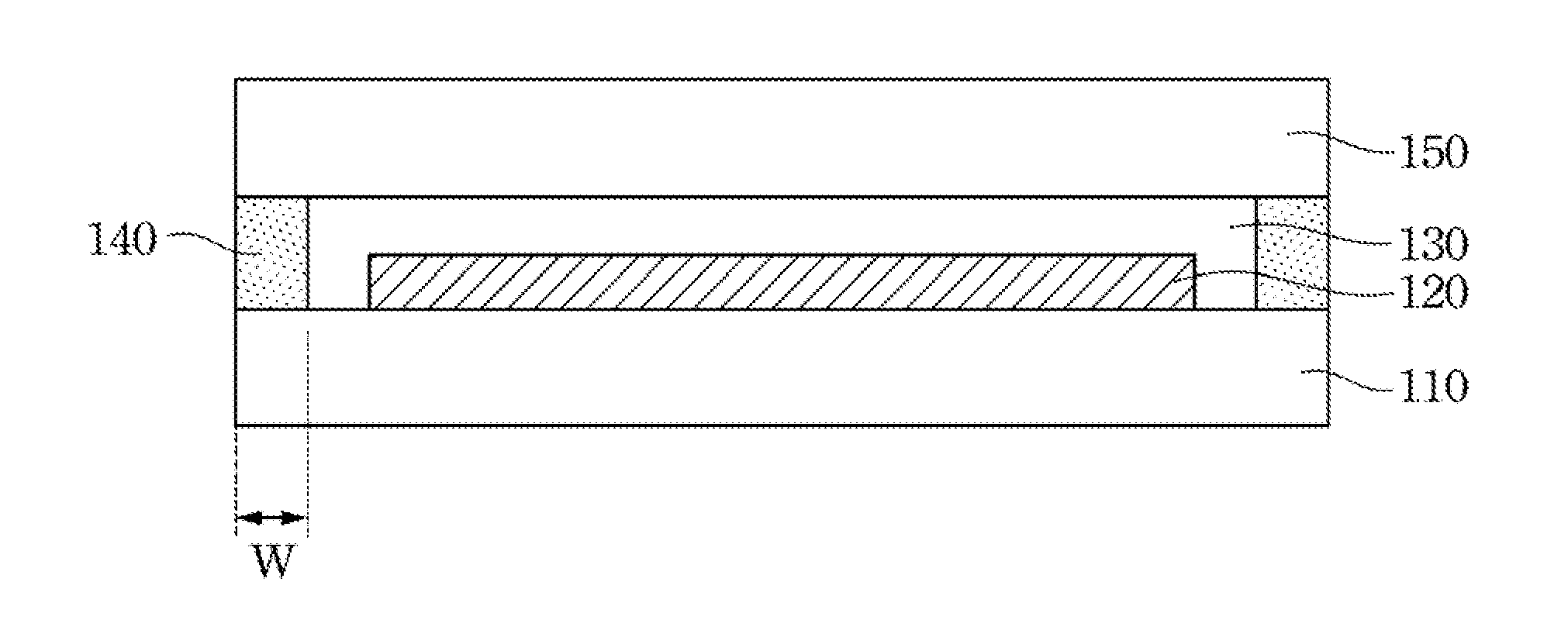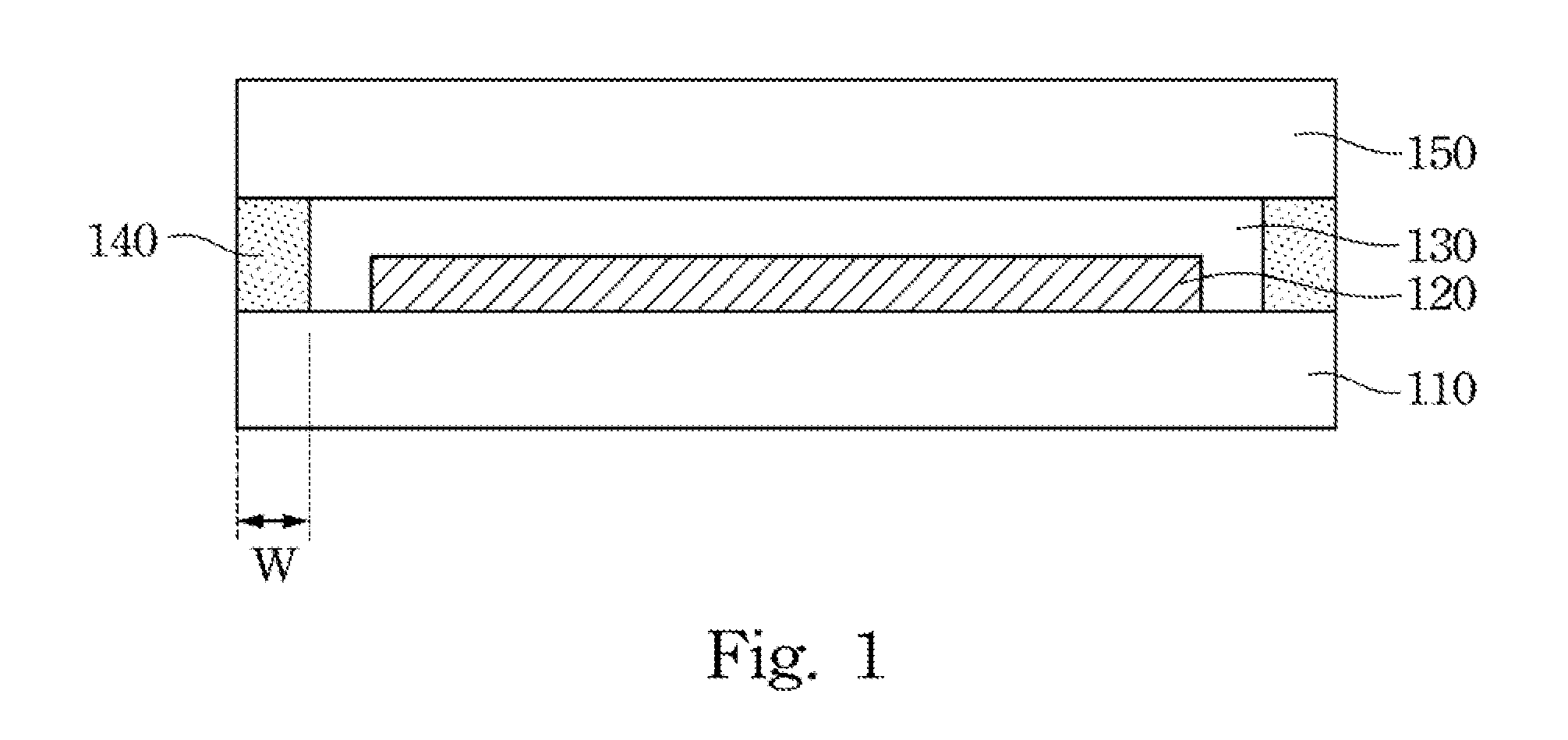Encapsulation of photovoltaic module
a photovoltaic module and encapsulation technology, applied in the field of photovoltaic modules, can solve the problems of poor waterproofness of eva, poor optical clarity, poor waterproofness of pv modules, etc., and achieve good waterproofness and resistivity, good optical clarity, and moderate tensile strength.
- Summary
- Abstract
- Description
- Claims
- Application Information
AI Technical Summary
Benefits of technology
Problems solved by technology
Method used
Image
Examples
Embodiment Construction
[0012]In the following detailed description, for purposes of explanation, numerous specific details are set forth in order to provide a thorough understanding of the disclosed embodiments. It will be apparent, however, that one or more embodiments may be practiced without these specific details. In other instances, well-known structures and devices are schematically shown in order to simplify the drawing.
[0013]As stated above, an encapsulant needs to have good optical clarity, tensile strength, resistivity, and waterproofness to give considerations on both to cell efficiency and protecting the PV module from being damaged by various outdoor factors, such as rains or humidity, temperature, thunders, and some other external forces. However, it is difficult to find an encapsulant to meets the multiple requirements above, let alone find a cheap encapsulant.
[0014]This invention uses a combination of multiple kinds of encapsulant on different locations of a PV module to meet the multiple ...
PUM
 Login to View More
Login to View More Abstract
Description
Claims
Application Information
 Login to View More
Login to View More - R&D
- Intellectual Property
- Life Sciences
- Materials
- Tech Scout
- Unparalleled Data Quality
- Higher Quality Content
- 60% Fewer Hallucinations
Browse by: Latest US Patents, China's latest patents, Technical Efficacy Thesaurus, Application Domain, Technology Topic, Popular Technical Reports.
© 2025 PatSnap. All rights reserved.Legal|Privacy policy|Modern Slavery Act Transparency Statement|Sitemap|About US| Contact US: help@patsnap.com


